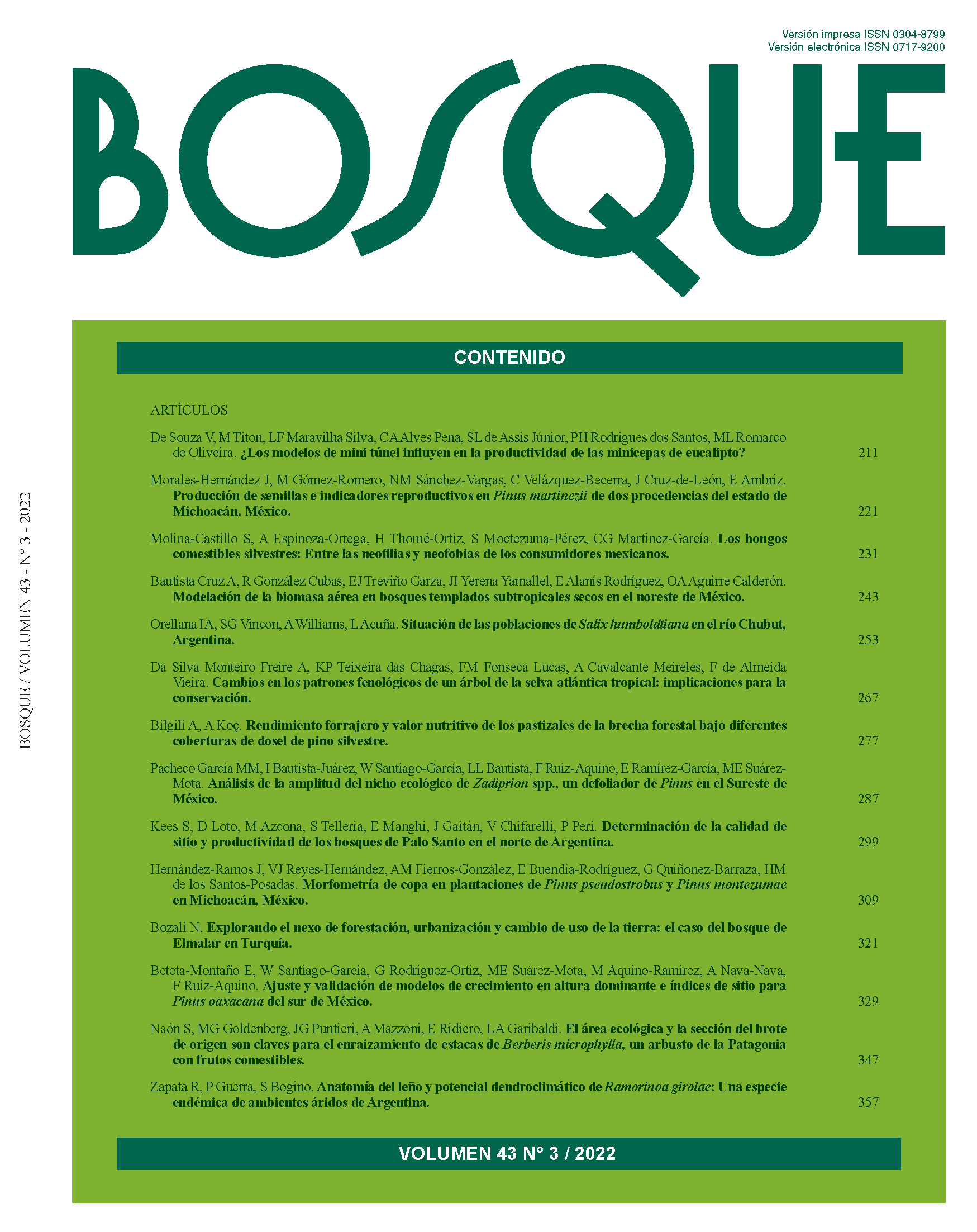Main Article Content
Jan 4, 2023
Abstract
Forest use in the Sierra Norte de Oaxaca, Mexico, has been threatened by the damage of a defoliator called the sawfly (Zadiprion spp.). The current magnitude of damage by this species is unknown, as are the biological and ecological aspects that determine its distribution. The aim of this work was to estimate the distribution and potential area of impact of Zadiprion spp. in the Sierra Norte de Oaxaca and the edaphoclimatic variables that favor its development in the region. Soil samples and specimens of the insect were collected to analyze in the laboratory. Ecological niche models were generated with MaxEnt (ver. 3.3.3), using records of the presence of the species and 19 bioclimatic variables. Reliability was evaluated using the area under the curve and a principal component analysis was carried out to identify variables. The optimal values of edaphological variables were calculated using the Kernel density index and the similarity between sites using the Gower metric. The niche models had values greater than 0.90. The most important edaphological variables impacting presence of the pest were organic matter, texture, density, infiltration, pH and moisture content. The development of adequate strategies to control the sawfly is necessary, as the pest can affect a considerable area of forest destined for forest management in a short amount of time.


